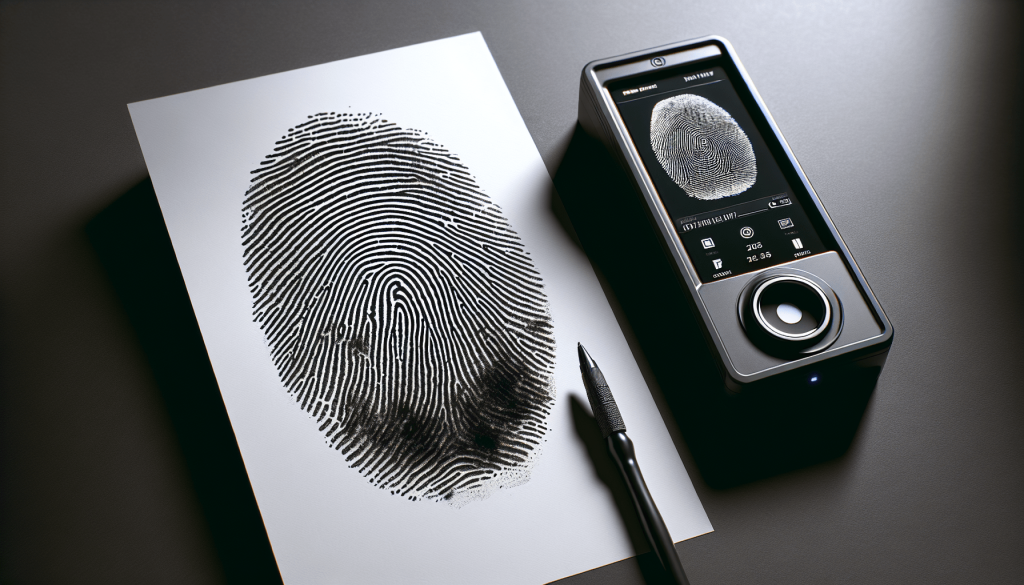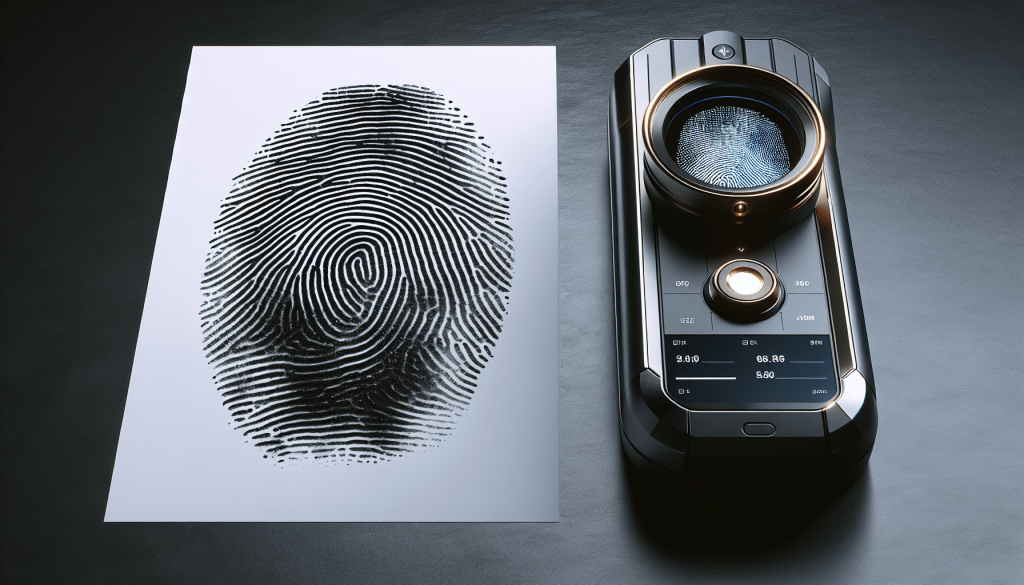Curious about the differences between ink fingerprinting and live scan fingerprinting, particularly in terms of their accuracy rates? You’re in the right place! This article will walk you through everything you need to know about these two fingerprinting techniques, their accuracy levels, benefits, and drawbacks, helping you understand which one might be the best for your needs.

What Is Fingerprinting?
Fingerprinting has been a reliable method for identifying individuals for over a century. Fingerprints are unique to each person and even identical twins have different fingerprints. These patterns don’t change over time, making them invaluable for law enforcement, background checks, and various other identification processes.
Traditional Ink Fingerprinting
Ink fingerprinting, also known as the traditional method, involves rolling your fingers on an ink pad and then rolling them onto a paper card. This creates a tangible, physical record of your fingerprints.
Live Scan Fingerprinting
Live Scan fingerprinting is a digital method that captures fingerprints using a scanner. Your fingerprints are electronically scanned and then processed digitally, offering a quick and often more accurate result.
The Science Behind Fingerprinting
Understanding how fingerprints work helps in appreciating the accuracy and efficacy of both ink and live scan fingerprinting methods.
The Formation of Fingerprints
Fingerprints begin forming while a fetus is still in the womb, around the 10th week of gestation. By the time a fetus is 17 weeks old, the fingerprints are fully developed and remain the same throughout a person’s life.
Types of Fingerprint Patterns
There are three main types of fingerprint patterns: loops, whorls, and arches. Each person’s fingerprint contains one of these patterns or a combination of them, creating a unique identification marker.
Loops
- Ulnar Loop: Opens towards the pinky finger.
- Radial Loop: Opens towards the thumb.
Whorls
- Plain Whorl: Circular patterns.
- Central Pocket Loop Whorl: Loop with a circular inner pattern.
- Double Loop Whorl: Two loops that create an S-like shape.
- Accidental Whorl: Contains components of multiple pattern types.
Arches
- Plain Arch: Gentle, rising waves.
- Tented Arch: Steeper, more pronounced arch.
How Is Fingerprinting Done?
Both ink and live scan fingerprinting have their specific methodologies, equipment, and processing steps that distinguish one from the other. Let’s review these in more detail.
Ink Fingerprinting Process
- Preparation: Hands are cleaned to remove oils and residues.
- Ink Application: Fingers are pressed onto an ink pad.
- Rolling: Each finger is rolled from one side to the other on a fingerprint card to capture the print.
- Labeling: The fingerprint card is labeled with personal details and signatures.
- Submission: Physical cards are sent to the relevant agency for analysis.
Live Scan Fingerprinting Process
- Preparation: Hands are cleaned and dried.
- Capture: Fingers are placed on a glass platen of the live scan device.
- Scanning: The scanner digitally captures the fingerprints.
- Verification: Software checks for image quality and clarity.
- Submission: Digital prints are sent electronically to the relevant agency for analysis.

Comparing Accuracy Rates of Ink vs Live Scan
The accuracy of fingerprinting methods matters a great deal, especially when it comes to legal matters, employment screenings, and background checks. Let’s investigate how these two methods fare in terms of accuracy.
Error Rates and Misidentifications
Both methods can have errors, but the types and frequencies of these errors can differ.
Ink Fingerprinting
Accuracy rates for ink fingerprinting can be compromised due to various factors like smudging, uneven pressure, and human error. Poor-quality prints can lead to misidentifications or the need for re-collection. Studies have shown that ink fingerprints have an error rate of around 3-5%.
Live Scan Fingerprinting
Live Scan fingerprinting significantly reduces the risk of poor-quality prints. The digital nature allows for real-time verification and correction of prints. Error rates for live scan fingerprinting are generally lower, hovering around 1-2%.
Quality of Prints
The quality of prints determines how easily and accurately they can be analyzed.
| Method | Average Error Rate | Quality of Prints |
|---|---|---|
| Ink Fingerprinting | 3-5% | Subject to smudges, uneven pressure |
| Live Scan Fingerprinting | 1-2% | Consistently high-quality prints |
Rejection Rates
Prints can be rejected by analyzing agencies if they don’t meet quality standards.
| Method | Average Error Rate | Quality of Prints | Rejection Rates |
|---|---|---|---|
| Ink Fingerprinting | 3-5% | Subject to smudges, uneven pressure | Higher |
| Live Scan Fingerprinting | 1-2% | Consistently high-quality prints | Lower |
Advantages and Disadvantages
Both fingerprinting methods have their set of pros and cons. Depending on your specific needs, one method may be more suitable than the other.
Advantages of Ink Fingerprinting
- Widely Accepted: Especially in jurisdictions yet to adopt digital methods.
- No Electronic Malfunctions: No risk of scanner errors.
- Lower Equipment Costs: Minimal equipment needed.
Disadvantages of Ink Fingerprinting
- Poor Print Quality: Higher likelihood of smudged or unclear prints.
- Time-Consuming: Slower process, requiring more time for capturing and submitting prints.
- Higher Error Rates: Increased chances of errors and rejections.
Advantages of Live Scan Fingerprinting
- Higher Accuracy: Digital capturing reduces errors and improves print quality.
- Faster Processing: Electronic submission speeds up the background check process.
- Real-Time Error Correction: Immediate feedback allows for instant quality corrections.
Disadvantages of Live Scan Fingerprinting
- Initial Cost: Higher initial cost for equipment setup.
- Dependence on Technology: Prone to technological malfunctions or issues.
- Availability: Not universally available in all regions.
Use Cases for Ink and Live Scan Fingerprinting
You may wonder why one method is chosen over the other in different scenarios. Both ink and live scan fingerprinting have applications that suit their advantages and limitations.
Criminal Justice
Live Scan fingerprinting is often preferred due to its higher accuracy and faster processing times. It allows law enforcement agencies to quickly send and receive fingerprint data, speeding up criminal investigations.
Employment and Background Checks
Live Scan is becoming the industry standard for background checks, especially in sectors requiring high security like healthcare and education. Its quick turnaround times and low error rates make it ideal for these purposes.
Personal Identification
Ink fingerprinting is still widely used for personal records, especially in areas where live scan technology is not accessible. It’s also useful where electronic submissions are not required.
Legal Implications
Fingerprinting is often a critical part of legal processes, and the type of fingerprinting method used can impact outcomes significantly.
Reliability and Admissibility in Court
Courts often scrutinize fingerprint evidence for accuracy and reliability. While both methods are generally admissible, live scan fingerprints are less likely to be questioned due to their superior accuracy and quality.
Record-Keeping and Storage
Ink fingerprint cards are physical and require space for storage, whereas live scan records are digital and can be stored electronically. This digital storage makes it easier to access and share records as needed.
The Future of Fingerprinting
Technological advancements continually shape the fingerprinting landscape. The increasing adoption of biometric systems, integration with artificial intelligence (AI), and improvements in live scanning technology promise even greater accuracy and efficiency.
Emerging Technologies
- Biometric Authentication: Integration with facial recognition and iris scans for multi-factor authentication.
- AI and Machine Learning: Use of AI to analyze fingerprint patterns and improve matching accuracy.
- Mobile Fingerprinting: Portable live scan devices for field use, making fingerprinting more accessible.
Increased Automation
Automation in fingerprint analysis can streamline many processes, reducing human error and speeding up results. Software improvements continue to enhance the ability to match fingerprints accurately, even in less-than-ideal conditions.
Choosing the Right Method
The choice between ink and live scan fingerprinting ultimately depends on your specific needs and circumstances. Consider factors such as accuracy, speed, cost, and availability when making your decision.
When to Choose Ink Fingerprinting
- Budget Constraints: Lower initial equipment costs.
- Lack of Digital Infrastructure: If electronic submission is not possible.
- Jurisdiction Requirements: When specific authorities still rely on traditional methods.
When to Choose Live Scan Fingerprinting
- Higher Accuracy Needs: Lower error and rejection rates.
- Faster Processing Required: Quicker turnaround times for results.
- Technological Capability: Availability of the necessary equipment and infrastructure.
Conclusion
In summary, both ink and live scan fingerprinting have their places in modern identification and verification processes. While live scan fingerprinting generally offers higher accuracy, faster processing, and lower error rates, ink fingerprinting remains a valid and valuable method in certain contexts. Weighing the pros and cons of each method will help you determine which is best suited for your specific needs.
Whether you’re involved in legal proceedings, employment background checks, or simply need to establish personal identification, understanding the differences between these two methods can guide you toward making informed decisions.

